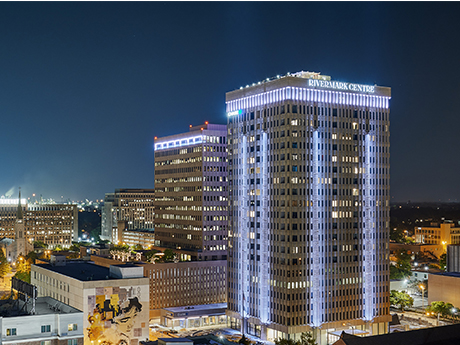By Barry Hand, principal at Gensler
Recently at the Urban Land Institute’s (ULI) fall conference, there were multiple themes that percolated upward and were left imprinted on the minds of the thousands of attendees moving from one session of experts to the next. These topics included:
- Increasing affordability issues at all strata of housing
- Double-digit percentages of single-use commercial real estate that will eventually need to be repurposed and/or demolished
- Further tightening of lending/underwriting
Upon reflection, each of these issues has been brewing for a while and is not surprising. In many ways, the individual topics are related and can be solved together.

Lack of affordable housing in numerous markets for all income levels is an accelerating issue due to population growth, regulatory/zoning challenges, land costs, horizontal sprawl, construction costs, NIMBYism and the cost of capital. Each of these issues fuels concerns for lenders that are already potentially facing stress within their commercial real estate portfolios. The solution will require a multi-faceted approach.
Most metropolitan areas are seeing population growth. These same communities are chasing stronger commercial tax bases as well as the same employers and users who need accessible, mixed-income workforce housing. Again, there is no single magic solution. But legislation and zoning changes to allow greater residential densities and/or residential conversions from unoccupied or blighted commercial structures will bring quick and creative solutions for housing and commercial real estate issues.
In some neighborhoods, outdated land use zoning prohibits missing middle housing such as small-scale cottages, duplexes, fourplexes, townhouses and live-work formats that could bring variety and lifestyle amenities to a neighborhood. Demand for these projects confirms that the single-family residential neighborhood is alive and well in America and will be for generations.
But several of our existing single-family neighborhoods could integrate smaller-format and affordable housing opportunities with the addition of accessory dwelling units (ADUs). These are backyard properties that are sometimes referred to as granny flats or mother-in-law suites that also allow single-family homeowners to generate added income from rent. ADUs are in demand among singles, service industry workers, students and actual in laws who represent the return to a multi-generational way of living for families.
The percentage of distressed commercial real estate is debatable and undoubtedly varies by market and submarkets. But there was strong consensus amongst ULI attendees and council members from a wide range of the built environment industry that too much of our outdated, single-use, commercial real estate is no longer desirable. The lack of desirability extends to both employers and users who are either shrinking their footprints and/or moving toward newer infrastructure adjacent to or embedded in lifestyle amenities. This strikes fear in every analyst within commercial portfolio holders.
The flight to quality and the preferences for newer structures built within the last decade require further repurposing of older commercial structures and land into other uses to solve stresses in portfolios and tax bases. In some locations, there is a need for zoning/regulatory changes and public investment to jumpstart the turnaround and revitalization of blighted, single-use, commercial areas. Not every commercial building is suited or practical for conversion to residential or hospitality uses today, but many are and should be considered.
The scarcity of lending for new projects seems counterintuitive for anyone operating in a growing multifamily or industrial environment, where demand remains strong. Many components in our economy, however, are interrelated, and a further basic understanding of the stresses upon lenders and owners brings a quick and sobering clarity to current difficulties in the industry. Lenders are simply reducing their exposures and focusing on select projects with longstanding personal/business relationships and deals that are durable and rich in mix of components and quality of place. In many cases small, in-fill projects are the movers.
Investors will always gravitate toward the best proposals, and quality developments are still being underwritten today. To ensure quality of place and durability in development, the commercial real estate industry should always focus on authentic neighborhood-based solutions that are built upon a story rooted in experience and expert knowledge of the local culture. A durable project is rich with a purposeful, memorable and activated public realm that maximizes user interactivity, connectivity and a diversity of real experiences.
Higher land basis and lending issues increasingly require that projects be laser-focused on their target users and that a mix of uses be integrated to maximize the land use throughout the day. The days of single-use facilities surrounded by surface parking are ending. Neighborhood designs that offer a person’s daily uses in proximity and reduce commuting reflect smart land utilization.
Along that note, intuitive solutions for mobility and the digital experience are key in ensuring consumers are happy and will return to a developed place. Caruso has mastered this approach of building loyalty and embedding a mix of lifestyle amenities in neighborhoods, and it can be seen in large developments such as The Grove in Los Angeles and the five-acre Palisades Village in-fill project in Pacific Palisades.
Again, each of the challenges outlined above will need to be improved together in a somewhat parallel approach. One solution will bring momentum to the other solutions amongst a city’s commercial and residential assets.


